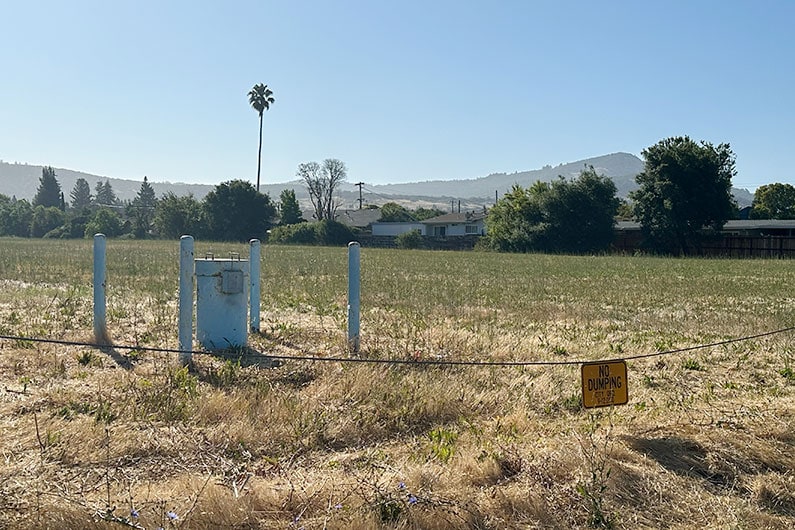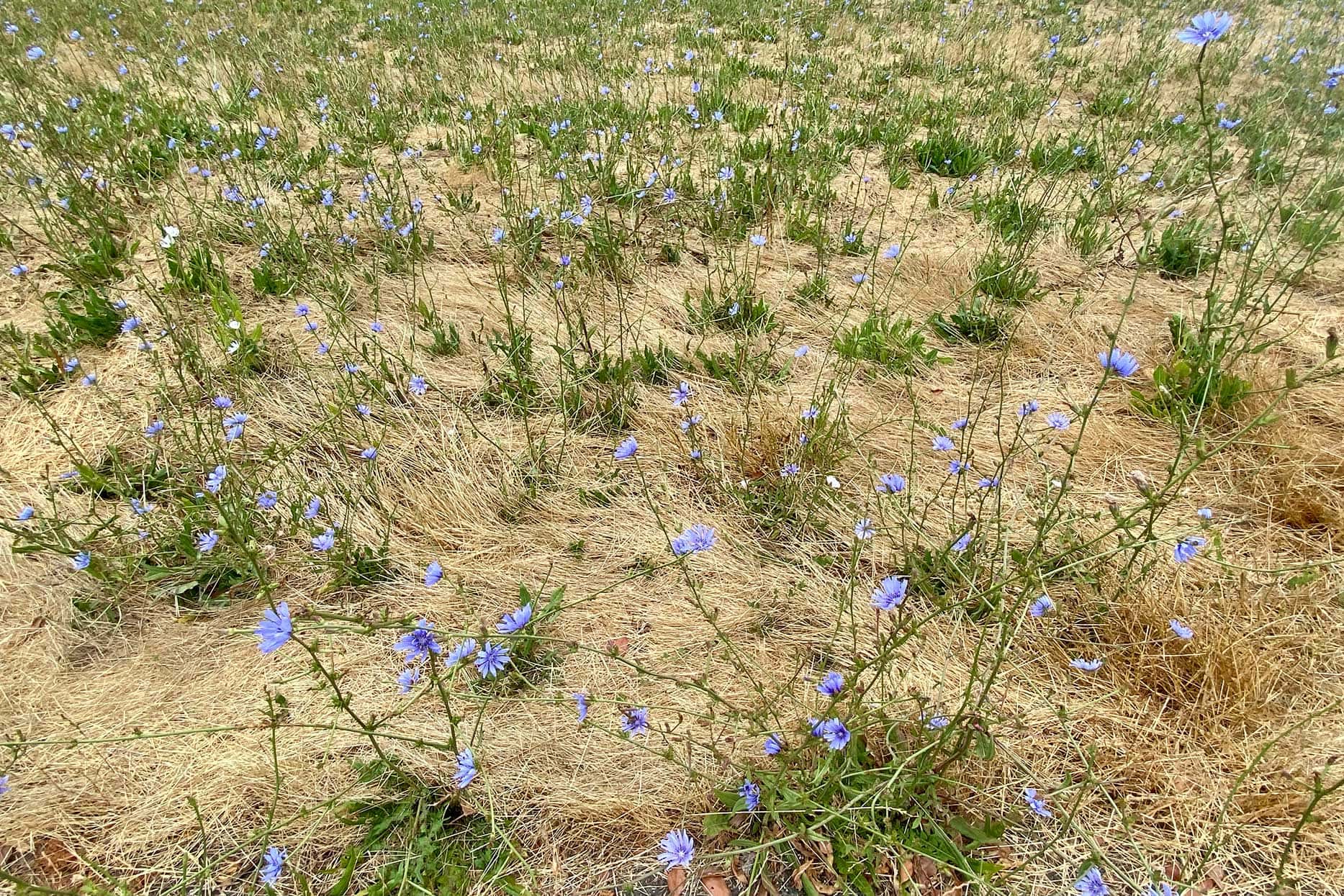Much to See and Learn on a Guided Walk
Before becoming a volunteer for the Southeast Greenway and several times since, I have joined the monthly guided walks. Each time I join these events I learn new and interesting facts from the volunteer walk leaders and come away with a greater appreciation of Santa Rosa’s newest city park. I have witnessed how the land changes with the seasons. On the July walk, the fields were drenched in color from crowds of white, yellow and violet-blue wildflowers.
Between Franquette and Yulupa, the most abundant of the flowers was the bluish-purple bloom of the chicory plant. While pretty, especially in combination with other wildflowers, chicory is a non-native plant and supports fewer pollinators and wildlife than native plants. Non-native plants like chicory tend to crowd out native flowers and grasses, leaving less food for bees and other insects.
Chicory is one of numerous herbs found on the site, both native and non-native. A member of the sunflower family, chicory flourishes in the Greenway’s Ruderal Habitat, characterized by plants that thrive in disturbed environments, such as vacant lots and construction sites. While we can enjoy the burst of color now, replacing non-native plants with wild grasses and flowers endemic to the Greenway will play a significant role in supporting wildlife and contributing to biodiversity.

A Well with Potential
Beyond the natural beauty, the Greenway is also the site of an important environmental study happening this summer. From now through October, the City of Santa Rosa Water Department and the Santa Rosa Plain Groundwater Sustainability Agency will be testing an existing well on Martha Way, pictured above. The goal: to evaluate whether this site could serve as a future location for storing and recovering drinking water in the underground aquifer. Read more about the project in this June 2025 article.
Photos courtesy of Mary Pierce and Greg Cox

